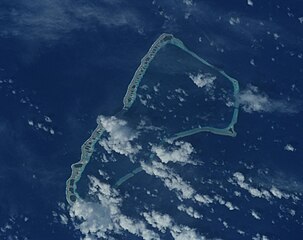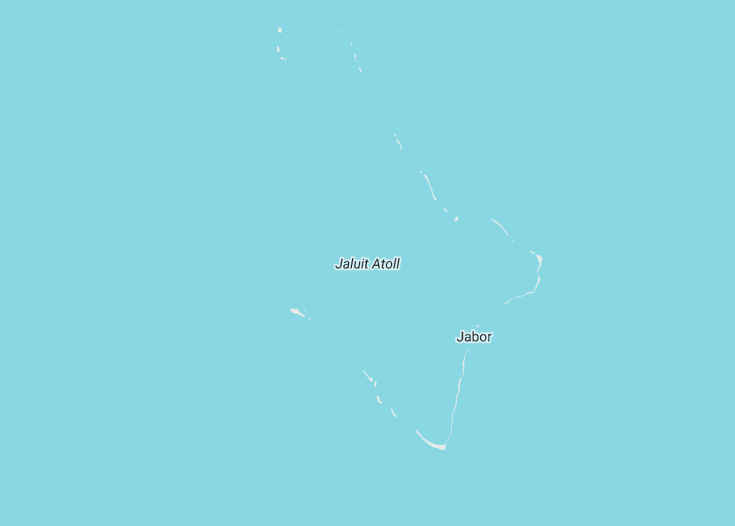Jaluit Atoll, located in the Marshall Islands, is an enchanting destination that offers a unique blend of natural beauty and historical significance. This remote atoll is comprised of numerous islets surrounding a large lagoon, boasting spectacular marine biodiversity. Jaluit is also steeped in history, once serving as a Japanese naval base during World War II. Visitors can explore underwater shipwrecks, indulge in vibrant local culture, and enjoy tranquil beaches. It’s an ideal spot for adventurers and history buffs alike seeking a serene escape in the Pacific.
When visiting Jaluit Atoll, ensure to bring snorkeling gear. The lagoon’s clear waters are perfect for observing the abundant underwater life and shipwrecks.
Plan your visit between December and April for the best weather conditions, ensuring a more enjoyable experience exploring the atoll’s natural and historical sites.
Jaluit Atoll: A Pacific Paradise
| Country | Marshall Islands |
| Time in Jaluit Atoll | GMT+12 |
| Language spoken | Marshallese |
| Population | 1,669 (World Population Review) |
| Currency | United States Dollar (USD $) |
| Airports |
|
Jaluit Atoll in the Marshall Islands is a stunning string of islands and coral atolls located in the central Pacific Ocean. Known for its rich history and breathtaking natural beauty, Jaluit was once an administrative center during the Japanese South Seas Mandate in the early 20th century. Today, it stands as a serene getaway that provides glimpsapes into Micronesian culture and traditional lifestyles of the Marshallese people.
The atoll consists of 91 islands, with only about six inhabited ones. Among these, Jabor on Jaluit Island is the most populous and serves as the commercial hub. With its lago-entry channel on the north side and the major airport, Jabor is the starting point for many visitors exploring the atoll’s vast natural offerings.
Jaluit’s historical significance is marked by remnants from its era under Japanese control, where it served as a major naval base during World War II. Today, artifacts, shipwrecks, and building ruins provide a fascinating glimpse into its past, attracting historians and adventurers alike. Nature enthusiasts thrive here with opportunities for diving, snorkeling, and fishing in crystal clear waters rich with diverse marine life. The surrounding reefs are renowned for vibrant coral and underwater biodiversity that make it a favorite amongst divers worldwide.
Despite its natural and historical attractions, Jaluit remains less traversed by tourists compared to other destinations in the Pacific, offering an authentic and peaceful experience. Its community, largely reliant on subsistence fishing and copra production, welcomes visitors with warm hospitality and a willingness to share their culture and stories.
Where is Jaluit Atoll?
Jaluit Atoll is based in the central Pacific Ocean, part of the Marshall Islands, located to the southeast of Majuro, the capital city.
Distances:
| Route | Distance by car | Time by car |
|---|---|---|
| Majuro to Jaluit Atoll | 230 mi (370 km) | 2 hours by air |
What is Jaluit Atoll famous for?
Jaluit Atoll is famous for its historical significance and natural beauty. It offers pristine beaches, excellent diving spots, and is a historical treasure trove of World War II relics.
History
Pre-European Contact
The history of Jaluit Atoll, a notable group of islands in the Marshall Islands, begins with its earliest inhabitants, the Marshallese people. These skilled navigators and fishermen settled the atoll thousands of years ago, establishing a thriving culture rich in traditions and maritime expertise. The social structure of Jaluit historically revolved around a matrilineal system, where land and titles were passed down through female lineage, a practice that shaped the societal hierarchy and local governance.
1885-1914: German Colonization
Jaluit Atoll’s modern history commenced significantly in 1885 when it became a part of the German protectorate in the Marshall Islands. The Germans established a coaling station and a trading post on the atoll, which became a central administrative point for the German colonial government. During this period, copra – dried coconut meat used for coconut oil production – became the dominant industry, heavily influencing the region’s economy and the daily lives of local inhabitants.
1914-1944: Japanese Control
Following World War I, control of Jaluit Atoll and the rest of the Marshall Islands was transferred to Japan. The Japanese fortified Jaluit and used it as an administrative and military base, significantly impacting the landscape and the local population. During World War II, the atoll served as a crucial logistical hub in the Pacific theater, leading to its involvement in several military operations and making it a target for Allied forces.
Post-1944: American Influence and Independence
After World War II, Jaluit came under the administration of the United States as part of the Trust Territory of the Pacific Islands. This period saw significant changes, including the introduction of modern educational and health facilities, and the shift towards a cash-based economy. In 1986, the Marshall Islands gained independence, marking a new chapter in Jaluit’s history. Today, while the atoll remains somewhat remote and less developed compared to other parts of the country, it is an important part of the Marshall Islands, with its unique history and culture.
Visit Jaluit Atoll
What to see and do in Jaluit Atoll, Marshall Islands
Visitors to Jaluit Atoll can immerse themselves in a tranquil paradise with activities and sights that highlight its natural and historical significance:
- Explore WWII relics, including gun emplacements and shipwrecks, which provide a haunting glimpse into the past.
- Visit the local community on Jaluit Island to learn about traditional Marshallese culture and crafts.
- Enjoy some of the best fishing spots in the Pacific, with opportunities to catch marlin, tuna, and other deep-sea fish.
- Snorkel or dive amongst vibrant coral reefs that are teeming with marine life, offering an untouched underwater experience.
Cultural Events
Experience the rich culture of the Marshallese during local festivals and gatherings, primarily held during July and August. These events often feature traditional music, dance, and handicrafts, providing visitors with a deeper understanding and appreciation of the local customs and community spirit.
Best time to visit Jaluit Atamp
The best time to visit Jaluit Atoll is between May and October when the weather is driest, and the seas are calm, making it ideal for outdoor activities and exploration.
Is Jaluit Atoll worth visiting?
Jaluit Atoll offers a unique glimpse into the remote island lifestyle of the Pacific, rich with history and natural beauty. While it provides an idyllic escape for those looking to experience pristine environments and cultural authenticity, the limited tourist infrastructure and the need for careful transportation planning might be challenging for some travelers. For those seeking adventure and a break from crowded tourist spots, Jaluit Atoll could be a worthwhile destination. However, it’s advisable to prepare thoroughly to enjoy what the atoll has to offer fully.









